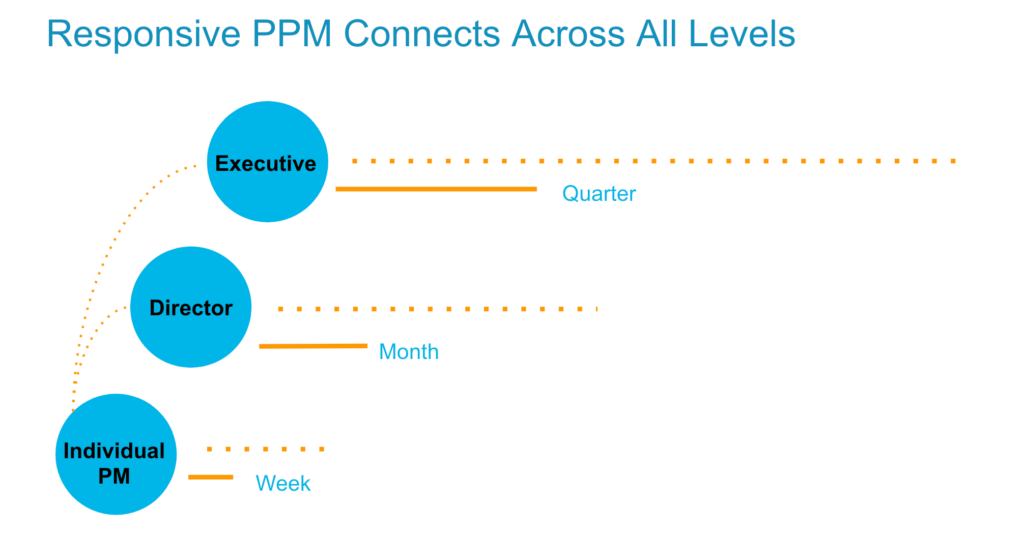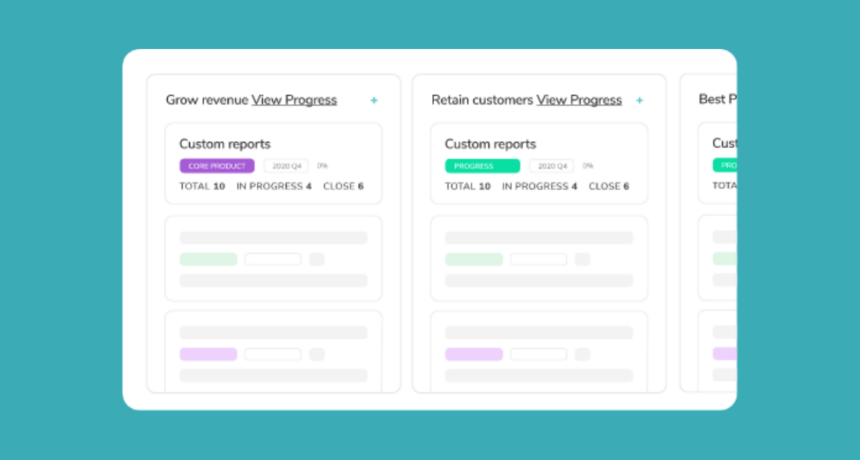Is quarterly planning still relevant in today’s dynamic, fast-changing environment? The answer is a definitive yes, but with a twist. Quarterly planning should not occur only once a quarter, and its deliverable shouldn’t just be a list of projects. Instead, it should be an exercise of continuous alignment on a quarterly horizon.
Some may ask – why do you need a quarterly cadence? With Agile, couldn’t we just continue iterating on the product in sprints? This takes us back to the need for the three separate time horizons of strategy and execution within an organization.
Every organization needs a longer-term, mid-term, and near-term time horizon with their own goals and respective strategies. Quarterly planning focuses on connecting the longer-term vision (e.g. annual) with the mid-term focus (e.g. quarterly), which provides strategic guidance for the next level of iteration (e.g. bi-weekly). Quarterly alignment is for agile leaders to provide context for agile teams.

Here are some of the common challenges for product teams lacking responsive quarterly alignment:
- Disconnect – Let’s say a product or feature launched from the previous period and hit the market. The resulting business impact may or may not have been anticipated. So, the company must adjust goals and strategies subsequently. However, these strategic changes often won’t reach the team in time or with enough context, resulting in the team continuing to execute strategies from 1-2 quarters ago.
- Poor allocation – Many companies adopt stable teams or a full-stack team model (think pods or tribes) without adjustment. However, as the business needs change, the previous allocation by team may not support current needs. Some teams end up under water with too many mission critical features while others may not have the same level of delivery pressure, leading them to focus on their locally optimized roadmap.
- Incongruent UX – Without frequent alignment across teams and functions, silo’d decisions and prioritization happens. Dependencies are exposed. To avoid lengthy delays, teams have to create work arounds. This creates a suboptimal user experience and “products with an org structure”.
Quarterly Planning vs Quarterly Alignment
Traditional quarterly planning aims to address these challenges, but it focuses on the output of a committed list of projects. While there are merits to this deliverable, it does not fit into the fast-changing environment where the list of projects will change through the quarter.
This is why quarterly alignment emerges.
Quarterly alignment is the process of connecting the longer-term vision with sprints and activities responsively via collaboration between executives and leaders and across teams on what we want to achieve and the strategies to achieve them. The outcome is a set of initiatives (aka programs) with defined goals that empower further innovation without misalignment.
How Do You Perform Quarterly Alignment?
Here is a time-tested framework:
- Define the top 2-5 goals and target metrics for the upcoming quarter. An OKR framework (Objective and Key Result) is a good way to start.
- Brainstorm and prioritize product features, marketing and/or other initiatives to achieve these goals.
- Identify gaps and dependencies in achievability and/ or resources (check out how to use MoAR to prioritize).
- Iterate between 2 and 3 until a good enough game plan (a list of initiatives enabling your OKR’s) is in place. Learn more about the rock, pebble, and sand method.
- Track both work progress and OKR progress to responsively adjust your team’s focus.
Quarterly alignment is not a “build it once and rest forever” exercise. Frequently review (on a bi-weekly or monthly basis) the current trajectory against the desired outcome, and adjust the detailed activities responsively.
Clarity and alignment are critical to the success of any company. Quarterly alignment is a valuable cadence to enable it, giving your company the opportunity to align teams and products against the goals at the OVERALL company level (see the MoAR Method). This way, your teams can innovate and move fast in the same direction.




